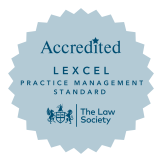Blog
A Solicitor’s Guide to Planning Property Disposals
- Posted:
- 26 September 2024
- Time to read:
- 3 mins
Disposing of a leasehold or freehold property can be a complex process, requiring careful planning and legal expertise. As a solicitor, my role is to guide you through each step, ensuring a smooth and legally sound transaction. Here’s a comprehensive guide to help you understand the process and know when to seek professional advice.
Understanding the Disposal Process: Key Initial Steps
The first step when considering the disposal of a leasehold or freehold property is to conduct a thorough review of the property’s title and any existing obligations. This includes:
- Reviewing the Title Deeds: Ensuring there are no restrictions or encumbrances that could affect the sale
- Understanding Lease Terms: For leasehold properties, review the lease agreement to understand any conditions or obligations that must be met
- Valuation: Obtain a professional valuation to determine the market value of the property
When to Involve a Solicitor in the Disposal Process
A property owner should contact a solicitor as soon as they start considering the disposal of their property. Early legal advice can help identify potential issues and streamline the process. Ideally, reach out before making any commitments or entering into negotiations. Solicitors can assist at the heads of terms stage also.
Important Questions to Address Before Disposal
During our initial consultation, I will ask several key questions to better understand your situation:
- Property Details: Can you provide details about the property, including its location, type (leasehold or freehold), and any existing tenancies?
- Reason for Disposal: What is your primary reason for disposing of the property? (e.g., financial reasons, business relocation, etc.)
- Timeline: Do you have a specific timeline in mind for the disposal?
- Existing Obligations: Are there any existing mortgages, leases, or other obligations tied to the property?
- Other Considerations: Is the property occupied? Have you received any notices from any regularity agencies or if there is an ongoing dispute regarding boundaries? Has there been a recent insurance claim, etc?
Exploring Your Disposal Options: Sale, Assignment, and More
Depending on your circumstances, there are several options for disposing of a leasehold or freehold property:
- Sale: The most common method, involving selling the property to a new owner
- Assignment: For leasehold properties, you may assign the lease to another party
- Surrender: In some cases, you may surrender the lease back to the landlord
- Break Clause: Does your lease contain a break clause that you can trigger?
- Subletting: If allowed by the lease, subletting can be an option to generate income while retaining the leasehold interest
Conclusion: Ensuring a Smooth and Successful Property Disposal
Disposing of a leasehold or freehold property involves several critical steps and decisions. By seeking early legal advice and understanding your options, you can ensure a smooth and successful transaction.









